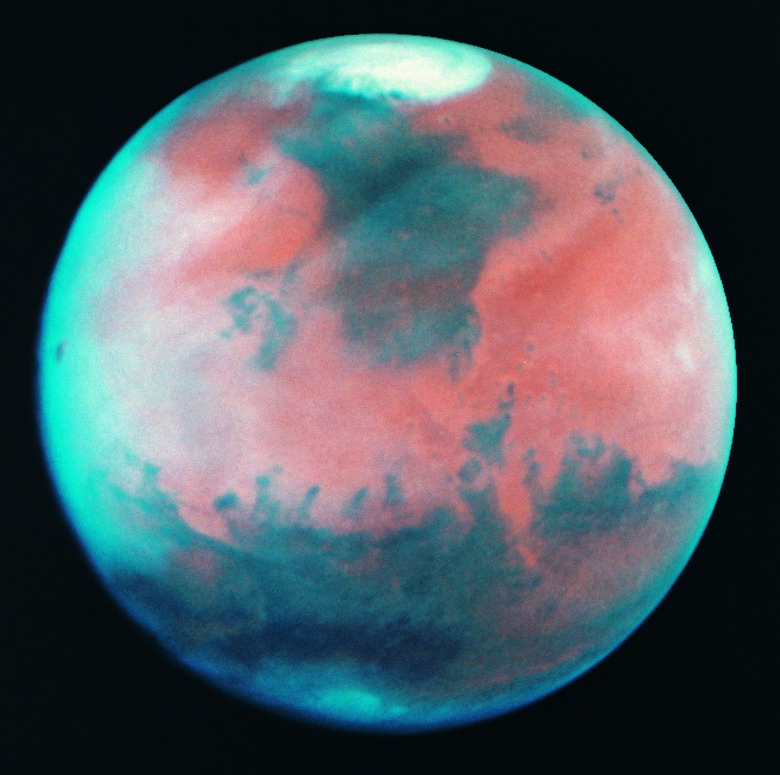Desert Planets
Desert planets have long been settings for works of science fiction. Think of the arid planet Arrakis in the novel "Dune," for example, or the dry desert where Luke Skywalker's adventures begin in the movie "Star Wars." But desert planets don't exist only in science fiction. In fact, you can find them both here in the solar system and elsewhere.
Characteristics
Characteristics
By definition, a desert planet is one that is mostly or completely desert — a world with a hot, arid climate and scarce precipitation. That doesn't mean the terrain need be monotonous, however; desert planets can have huge craters, mountain ranges and other interesting physical features. The kinds of rocks on a desert planet will depend on which minerals are abundant there. Because desert planets lack water, they also lack many of the geographic and geological features created by water, like the river valleys spawned by flowing water and the limestone that form in aqueous environments here on Earth. Typical desert planets in science fiction have unfriendly climates but are at least able to support life and hence suitable for colonization.
Mars
Mars
Mars is the most familiar example of a desert planet. Today there are only traces of water and no liquid water on Mars, only frozen carbon dioxide near the poles. There is no precipitation except for the snow that falls at the poles, so the Martian climate is extremely arid and unsuitable for life. Unchecked by large bodies of water or vegetation, wind storms can gather strength and turn into ferocious dust storms that cover thousands of square miles. The thin atmosphere heats up rapidly during the day and then plunges to frigid subzero temperatures at night. In short, the climate of Mars is very hostile to life.
Scientists now believe it might have been more welcoming at some point in the past, since many ancient geological features on Mars, like interconnected valley systems, suggest that liquid water was present early in the planet's history. Researchers are still trying to reconstruct what the climate of early Mars may have been like and what caused it to change so dramatically.
Inner Planets
Inner Planets
Mars is probably the closest thing to the classic desert planet of science fiction that exists in the solar system. Two other planets in Earth's vicinity, however, could also be called desert planets. The surface of Venus bakes at about 475 degrees Celsius (800 degrees Fahrenheit), and although the clouds rain sulfuric acid, none of this corrosive precipitation ever reaches the surface because it evaporates before it hits the ground. The surface is a lifeless, monotonous desert that lies in the permanent shade of thick clouds.
Mercury is the closest planet to the sun and has virtually no atmosphere and hence no precipitation. There is essentially no weather. Temperatures vary wildly between day and night because the side of the planet that is turned toward the sun is baking while the other side is frozen cold. Like Venus, Mercury is not much like the desert planets of science fiction; it is entirely unsuitable for colonization.
Outside the Solar System
Outside the Solar System
As of June of 2013, some 873 extrasolar planets have been discovered, and there are another 3,284 as-yet unconfirmed discoveries of what may be extrasolar planets. Traditional methods of planet hunting have made it easier to find large gas giants like Jupiter that fall into neither of these categories, but newer instrumentation has made it possible for scientists to search for smaller rockier planets that might qualify as desert planets. For most of these, however, scientists at this time still have fairly minimal data about the composition of their atmospheres and other features that might indicate whether or not they are desert planets, although scientists are typically more interested in planets with features that suggest they might be Earthlike.
References
- Space.com: Mars
- NASA: Past Climates, Research, Mars Modeling Group
- The Weather Channel: What Do Storms Look Like on Mars?
- Universe Today: Clouds on Venus
- NASA: Venus Weather Not Boring After All, NASA/International Study Shows
- CIT Jet Propulsion Laboratory: PlanetQuest, The Search for Another Earth
- Space.com: 10 Years of Planet Hunting: Amazing Variety Out There
Cite This Article
MLA
Brennan, John. "Desert Planets" sciencing.com, https://www.sciencing.com/desert-planets-23092/. 24 April 2017.
APA
Brennan, John. (2017, April 24). Desert Planets. sciencing.com. Retrieved from https://www.sciencing.com/desert-planets-23092/
Chicago
Brennan, John. Desert Planets last modified August 30, 2022. https://www.sciencing.com/desert-planets-23092/
